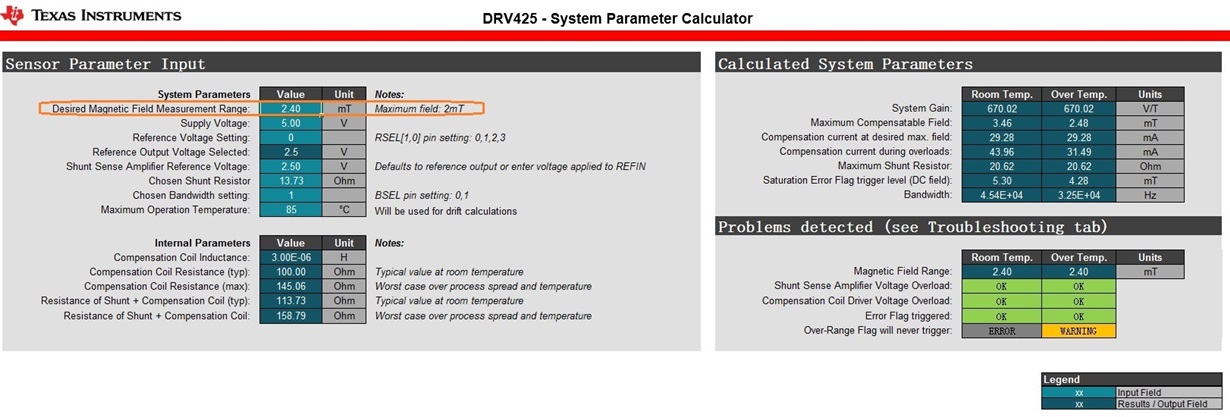Hello,
From datasheet of DRV425, the max sensor range is +/-2mT, the saturation magnetic field is above +/-3.6mT.
Is that possible it is used to measure magnetic field bigger than 2mT, such as 2.4mT?
Below is the calculation, it seems ok based "system parameter calculator."
But why "max field: 2mT" is noted? What problems would be met if it's used to measure magnetic field bigger than 2mT?





